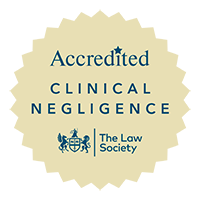Top ranked cerebral palsy claims lawyers
The RCOG has now published its full Each Baby Counts report, following its analysis of over 700 cases of stillbirth, neonatal death and severe brain injury in term babies in 2015.
The Each Baby Counts programme reflects the RCOG’s commitment to halve the number of babies who die or are left severely disabled as a result of preventable incidents occurring during childbirth at term by 2020. By collating the data from local investigations carried out by maternity units across the country and analysing them at a national level, RCOG has identified common themes and made evidence-based recommendations for action at key stages and in critical areas of care. If implemented, RCOG’s recommendations should improve the quality of maternity and neonatal care and reduce the unacceptable incidence of harm.
“The key finding – that for many of the babies reported to Each Baby Counts, different care might have resulted in a different outcome – makes a powerful case for the need to improve care.”
RCOG
At Boyes Turner, we couldn’t agree more. In 2015, 1 in every 635 babies born at term (at least 37 weeks gestation) in the UK, fulfilled the criteria for Each Baby Counts:
- Stillborn – thought to be alive at the start of labour but were born without signs of life
- Early neonatal death – died within the first week of life
- Severe brain injury diagnosed in the first seven days of life and:
- Was diagnosed with grade III hypoxic ischaemic encephalopathy (HIE)
OR
- Was therapeutically cooled
OR
- Had decreased central tone AND was comatose AND had seizures
The report highlighted the complex nature of maternity care, identifying over 3800 critical contributory factors across the reviewed year’s cases. No baby was affected by one factor in isolation. On average there were six contributory factors for each baby.
This complexity and the interplay between multiple levels of failure, on a system and professional team level as well as an individual level, was not reflected in the majority of local investigations, 91% of which did not involve external panel members, 66% of which did not include the parents, 32% of which did not include neonatologists and 23% of which aimed their recommendations for improvement solely at individual members of staff.
As specialists in cerebral palsy and birth trauma cases, this merely confirmed what we know to be true. The parents of our brain-damaged baby clients are often frustrated and angered by the extent to which the hospital’s investigation of the maternity and neonatal care that the family received fails to address their concerns or admit to the true cause of their baby’s injury. As lawyers, we are often frustrated by the hospital’s investigation report’s avoidance of key medical issues, such as causation of the baby’s permanent brain damage, which cannot be addressed properly without the involvement of a neonatologist or other suitably qualified paediatric or neurological expert.
Of the contributing factors identified by the Each Baby Counts panel, failures in fetal heart monitoring affected 409 babies, with commonly occurring themes of suboptimal care presenting an alarmingly similar picture to those highlighted by the Confidential Enquiry into Stillbirths and Deaths in Infancy (CESDI) report published in 1997. At that time, CESDI recommended regular training in the use of electronic fetal monitoring, simple guidelines on the interpretation of electronic fetal monitoring and guidelines on appropriate management and lines of communication in situations where the CTG is abnormal. Twenty years later, despite structured training programmes and NICE intrapartum guidelines, the Each Baby Counts report revealed persisting themes with electronic fetal monitoring, including failings in initiating, interpreting and escalating the findings of CTG monitoring appropriately. The RCOG called for continued efforts by the research community to find more robust methods for intrapartum assessments of fetal well-being, recognising that reliance on fetal heart-rate changes in complex, high risk situations is proving inadequate. Meanwhile, healthcare professionals were reminded of the importance of taking into account the full clinical picture when reviewing a continuous CTG.
Human factors (such as poor communication between or within professional teams, lack of team leadership and lack of situational awareness) affected 352 babies. Neonatal care was also one of the most significant contributory factors, given the fact that 80% of the babies reported to Each Baby Counts had either suffered a severe brain injury or died within the first seven days of life. In the cases in which the Each Baby Counts panel neonatologists had enough information to review, they found that 55% of the babies might have had a different outcome with different neonatal care.
The report included examples of cases where the outcome to the baby could not have been avoided. These included cases of appropriately treated placental abruption in a low risk pregnancy and a uterine rupture, recognised and acted upon immediately on the mother’s attendance at hospital in circumstances where she had been counselled antenatally about the risks of uterine rupture in vaginal delivery following a previous caesarean section. In cases such as these, the report emphasised the need for maternity care providers to carry out a “robust, thorough, open and honest review”, recognising that a high-quality transparent review will enable parents to gain better understanding that the care was appropriate, making it less likely that they will blame or lose faith in the system.
Overall, however, in 74% of the babies reviewed, at least one panel reviewer believed that different care might have made a difference to the outcome.
The RCOG has restated Each Baby Counts’ commitment to monitor and report on stillbirth, neonatal death and brain injuries. Boyes Turner welcome the RCOG’s commitment to facilitate learning from these tragic events in the hope that it will bring about change.
They have a great deal of knowledge and expertise, and client care seems to be their top priority.
Chambers Guide to the Legal Profession
Contact our expert Cerebral Palsy solicitors today for support with your claim




